Bonjour et Bienvenue au Québec! We are making our way to the final few stops on this epic road trip. I thought I’d share a few short stories (histoires) from the road as we head from Toronto to Montréal, Magog, and back to the USA. It’s great to re-immerse myself (albeit very briefly) in the French language and am looking forward to my time in Québec.
Histoire #1: There Are a Lot of Centrevilles in Canada
Il y a beaucoup des Centrevilles au Canada.
This one comes from my uncle. When he first moved to Canada many many years ago, he noticed tons of signs for the town of Centreville. They were everywhere. It felt like every other town he came across was called Centreville.
It didn’t take him long to figure out that Centreville was not the name of the towns. The signs were for “Centre-ville”, which means “downtown” in French.
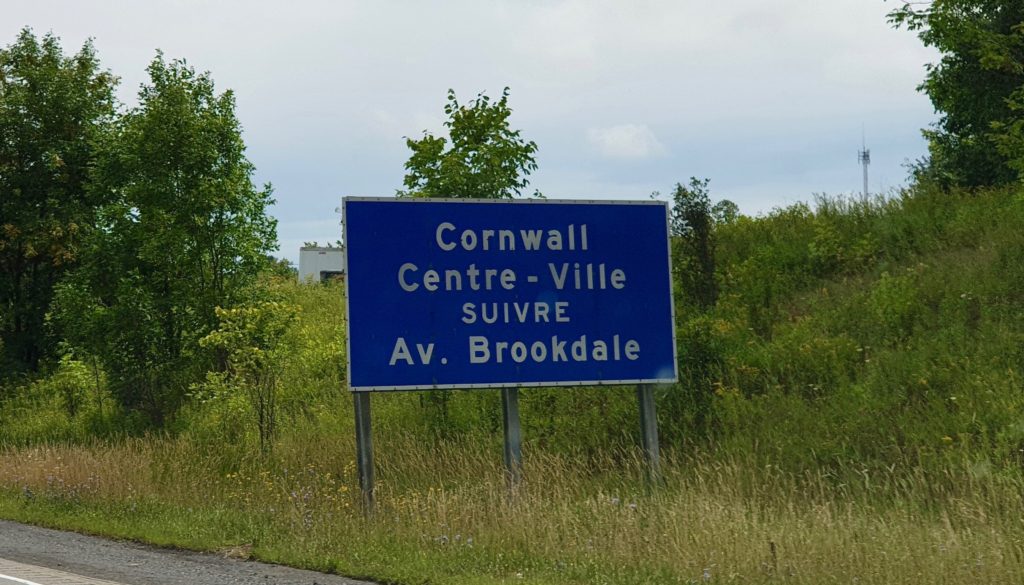
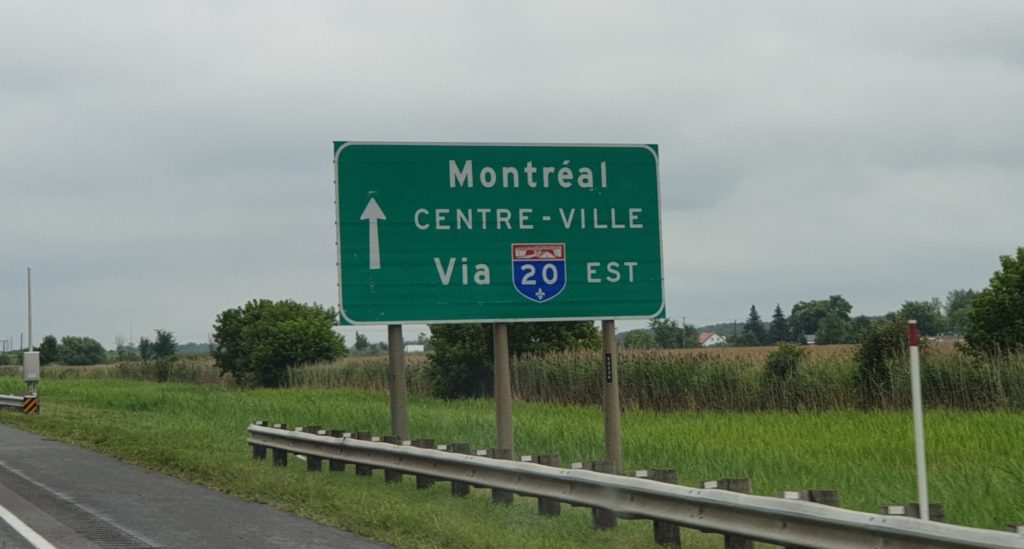
Histoire #2: Le Pont à Péage et Les Ensignes Bizarres
After crossing the border from Ontario into Québec, my top priority quickly became getting around Montréal before a) the bad weather set in and b) rush hour began. I had the route all mapped out before leaving Arizona, so I knew exactly where I needed to go. Follow L’Autoroute du Souvenir, which is what the 401 becomes when you cross into Québec. Take Autoroute 30, which is the bypass road around the south and east side of Montréal. On the other side of Montréal, get on Autoroute 10, which provides access to Sherbrooke and points east.
As skies darkened and traffic started to build, I found myself behind a bright yellow semi truck. You don’t see too many colorful semi trailers like that in the United States (or Canada for that matter). It kind of mesmerized me. My GPS then alerted me that we were approaching the turnoff to Autoroute 30. I snapped out of my mesmerized state in order to focus on navigation.
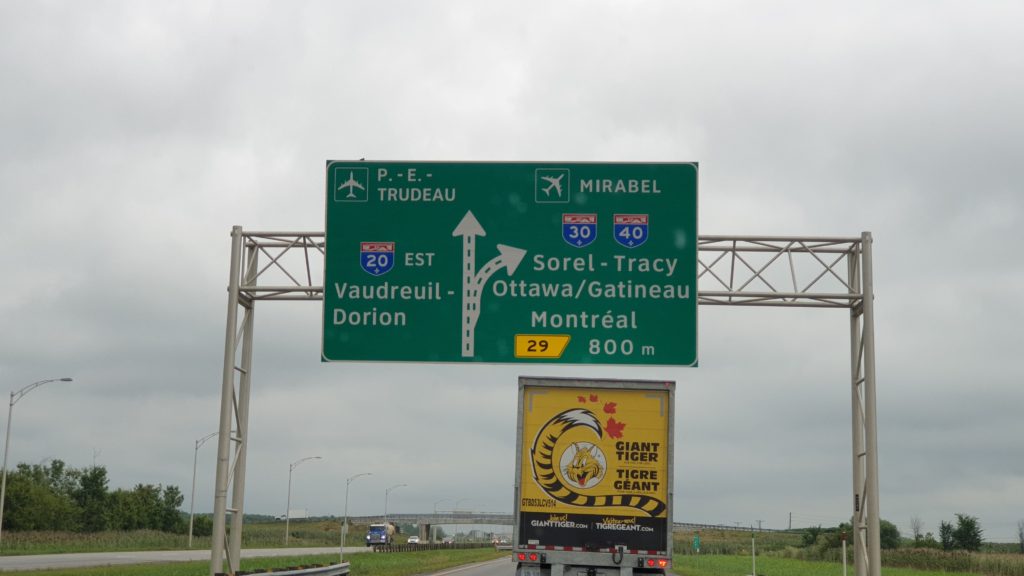
Anyone who has been stuck behind an 18 wheeler knows that seeing signs can be a challenge at times. This is especially true when you’re trying to navigate in traffic or weather – the exact scenario I was in. As I was on the ramp to Autoroute 30 trying to see around the semi, I happened to catch this sign out of the corner of my eye.
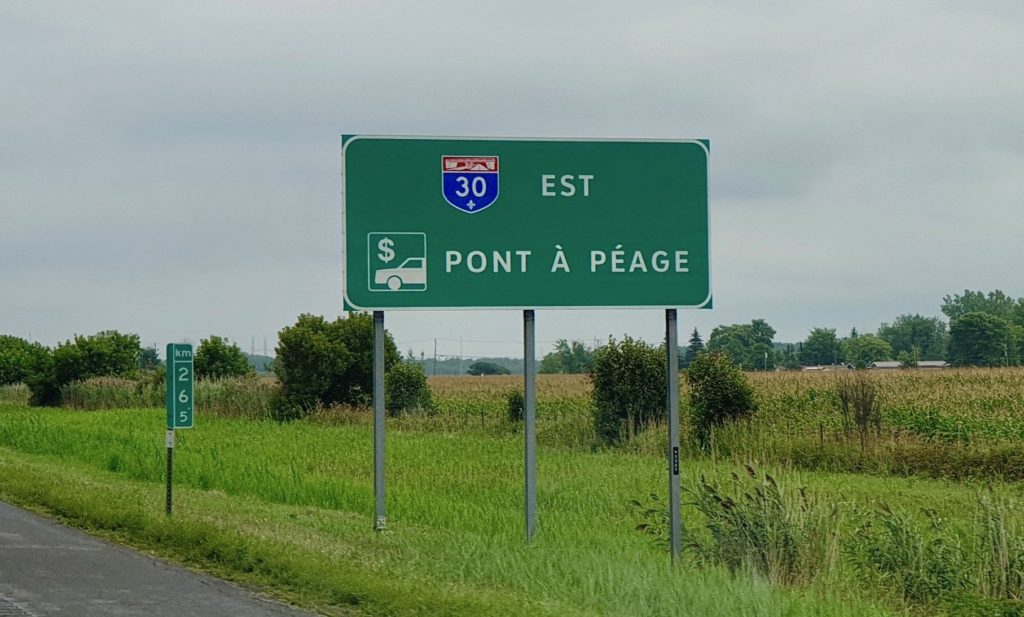
An Error in Planning
Now, I’m thinking to myself that I specifically remember planning this trip so that other than the Turner and Rogers Turnpikes in Oklahoma, I would avoid toll roads. Well, apparently I missed one. By now, I was past the point of no return. I had committed to the toll bridge. Thankfully, I had plenty of cash and a credit card with no foreign transaction fees. There was nothing to worry about.
Anyone who has been to the United States knows that most highway signs primarily use words and not diagrams. Anglophone Canada operates pretty much the same way, as does many of the tourist areas of Mexico near the US border. Those areas are increasing efforts to go fully bilingual.
The Ikea Challenge at 100 km/h
It turns out that Québec and Francophone Canada use the European approach to road signs. They use diagrams and not words on their signs. If you’ve ever put together furniture from Ikea, you know what deciphering these diagrams can entail. As I crested the toll bridge, I started to look for the signs for “Espèces” (cash) or “Carte de Crédite” (credit card) to pay the toll.
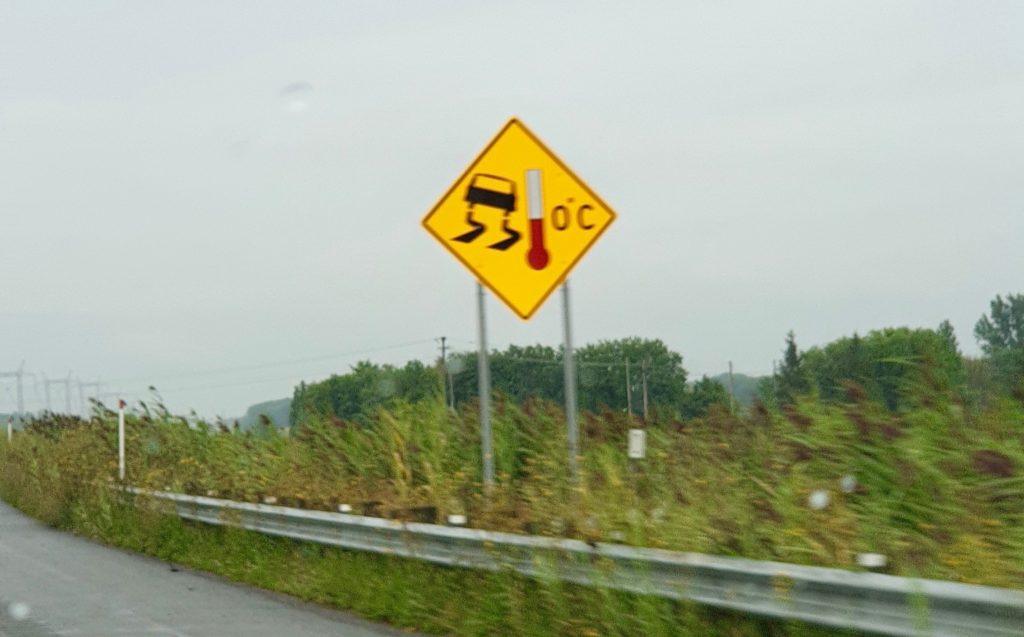
Instead, I saw two diagram signs. One just had a giant dollar sign on it, and the other looked like a cop trying to arrest someone. This was the Ikea diagram challenge all over again. As an added bonus, this time I had the challenge of doing it at 100 km/h. I wanted to pay with cash, so I essentially ended up just flipping a coin and chose one of the lanes signed by the giant dollar sign. Thankfully, that ended up being the cash lane. I paid the toll and continued on my way to Magog.
Histoire #3: Le Lac que Personne ne Peut Prononcer
Magog, Québec is well-known for its beautiful lakefront, which provides plenty of opportunities for outdoor activities, recreation, and relaxation. The name of the lake, however, is a mouthful. Thankfully, it’s the same in both French and English: Lac Memphrémagog. The name is derived from a Native American (Algonkian) word, Memrahabegek, which means “where there is a big expanse of water”. The lake itself is huge, spanning over 50 km from Magog, Québec south to Newport, Vermont.
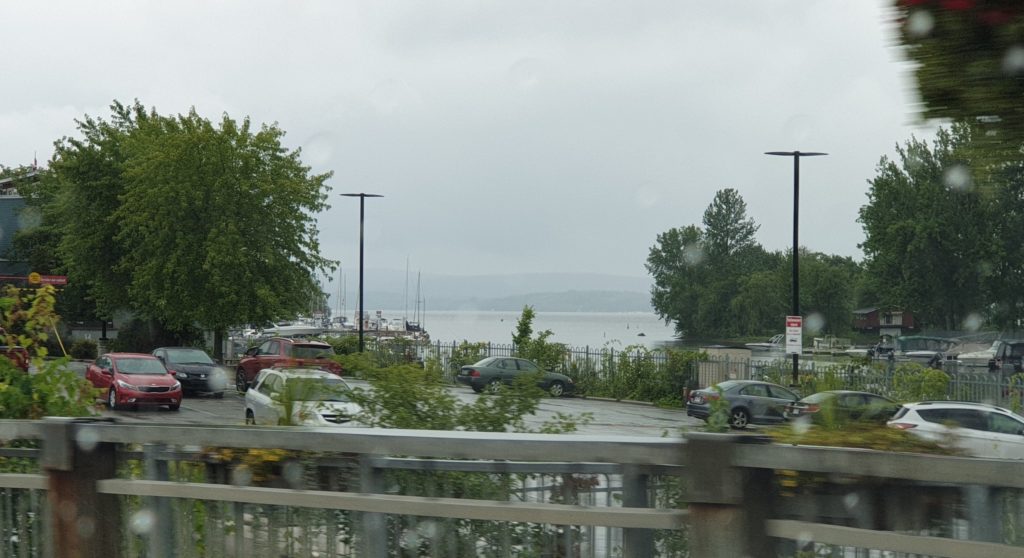
Unlike English, almost all words native to the French language are pronounced how they’re spelled. French pronunciations are not quite as straightforward as Spanish pronunciations, but they’re close. Where you start to run into pronunciation issues is where you have words that are not native to the French language, such as “Memphrémagog”. In all of the years I have spent studying the French language, I have never come across a word as long as “Memphrémagog” or a French word where you have so many “unnatural” pronunciations so close together.
Trying to Pronounce Memphrémagog
The evening before I left my uncle’s house, we decided to become a bit more cultured and learn the correct pronunciation of “Memphrémagog”. A quick Google search landed us on a webpage that had sound clips of the correct pronunciation in just about every language you could think of.
With the lake being in Québec, it was only natural to get the proper pronunciation in French first, and then in English. Once we had some good laughs trying to get it right (we eventually did get it right), it was time to truly bring this to the absurd and listen to it in other languages.
Before long, we had also listened to the pronunciation in Spanish, Italian, German, Swedish, Finnish, Polish, Greek, Russian, Serbian, Arabic, Punjabi, Chinese, and Japanese. As expected, it did reach some pretty absurd levels. We had plenty of good laughs trying and failing to pronounce the lake’s name in all these different languages. It amuses me just how easily entertained we are sometimes.
Histoire #4: The Most Canadian Anti-Road Rage Message I’ve Ever Seen
I’m normally not one to poke fun at stereotypes, but sometimes it’s just too easy. Unlike Americans, Canadians are known for being well-mannered, friendly, and at times even too polite. Canada was actually named the most polite country in 2015. With that reputation, you would think something like road rage wouldn’t be an issue, but apparently it still is. Shortly after turning off of L’Autoroute du Souvenir to go around Montréal, I came across this message on an electric sign.
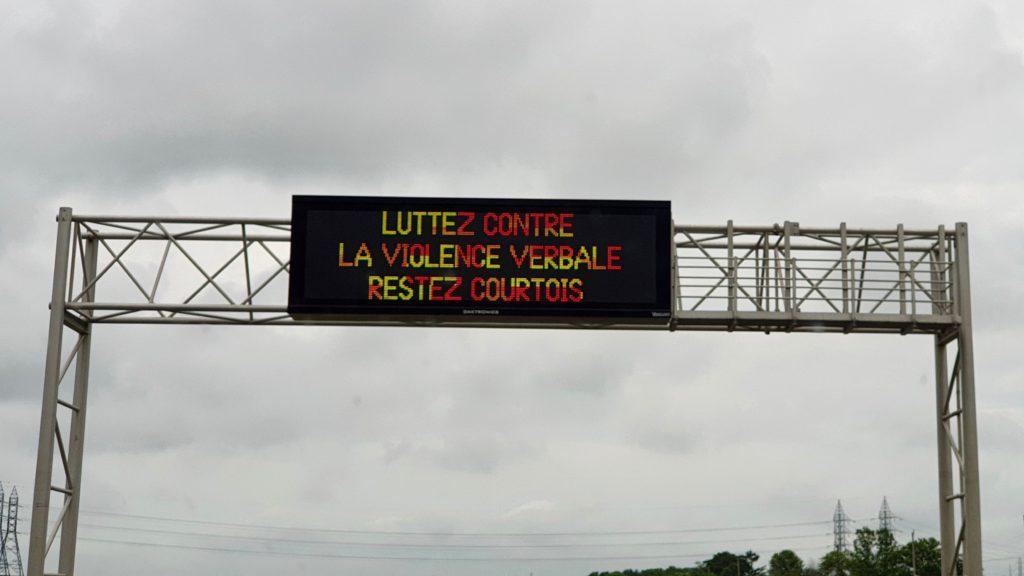
The sign essentially says “Don’t yell at others. Be courteous.” While I’ve seen plenty of humorous electronic signs over the years, I don’t think you’ll see a sign like this in the US anytime soon.
Alors, voici mon sortie sur l’autoroute pour aller à Magog, Rue Canusa, et la frontière des États-Unis. À la prochaine fois!